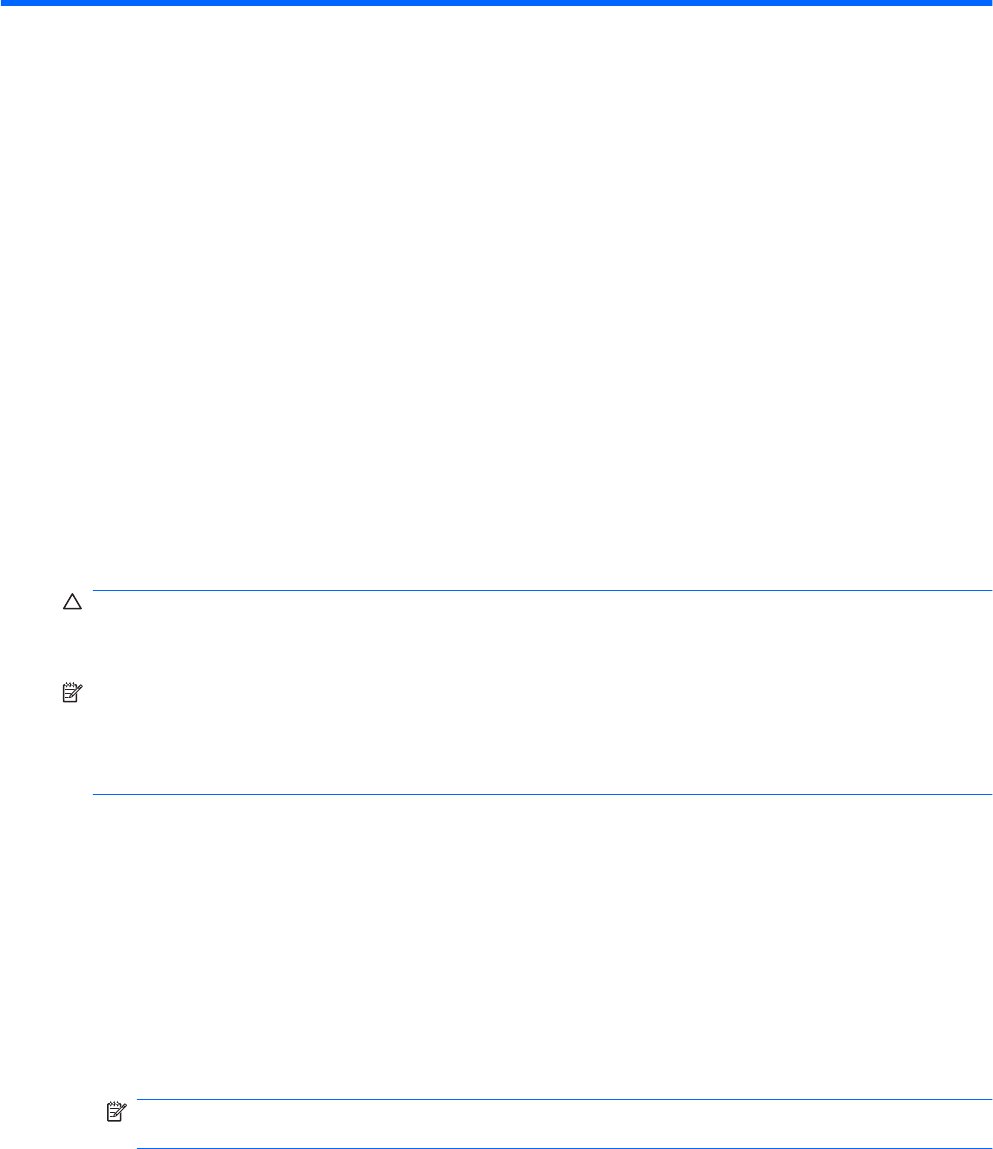Manual
Table Of Contents
- Features
- Networking (select models only)
- Pointing devices and keyboard
- Multimedia
- Power management
- Setting power options
- Using external AC power
- Using battery power
- Displaying the remaining battery charge
- Inserting or removing the battery
- Charging a battery
- Maximizing battery discharge time
- Managing low battery levels
- Calibrating a battery
- Conserving battery power
- Storing a battery
- Disposing of a used battery
- Replacing the battery
- Testing an AC adapter
- Shutting down the computer
- Drives
- External devices
- External media cards
- Memory modules
- Security
- Protecting the computer
- Using passwords
- Using Computer Setup security features
- Using antivirus software
- Using firewall software
- Installing critical security updates
- Using HP ProtectTools Security Manager (select models only)
- Installing a security cable
- Software updates
- MultiBoot
- Management
- Computer Setup
- Backing up and recovering
- Index

5 Power management
Setting power options
Using power-saving states
The computer has two power-saving states enabled at the factory: Standby and Hibernation.
When Standby is initiated, the power lights blink and the screen clears. Your work is saved to memory.
Exiting Standby is faster than exiting Hibernation. If the computer is in Standby for an extended period
or if the battery reaches a critical battery level while in Standby, the computer initiates Hibernation.
When Hibernation is initiated, your work is saved to a hibernation file on the hard drive and the computer
turns off.
CAUTION: To prevent possible audio and video degradation, loss of audio or video playback
functionality, or loss of information, do not initiate Standby or Hibernation while reading from or writing
to a disc or an external media card.
NOTE: You cannot initiate any type of networking connection or perform any computer functions while
the computer is in Standby or in Hibernation.
NOTE: When HP 3D DriveGuard has parked a drive, the computer will not initiate Standby or
Hibernation, and the display will be turned off.
Initiating and exiting Standby
The system is set at the factory to initiate Standby after 10 minutes of inactivity when running on battery
power and 25 minutes of inactivity when running on external power.
Power settings and timeouts can be changed using Power Options in Windows® Control Panel.
With the computer on, you can initiate Standby in any of the following ways:
●
Press fn+f3.
●
Select Start > Turn Off Computer > Stand By.
NOTE: If you have been registered to a network domain, the button you click will be called Shut
Down instead of Turn Off Computer.
If Standby is not displayed, follow these steps:
a. Click the down arrow.
b. Select Stand by from the list.
c. Click OK.
52 Chapter 5 Power management










